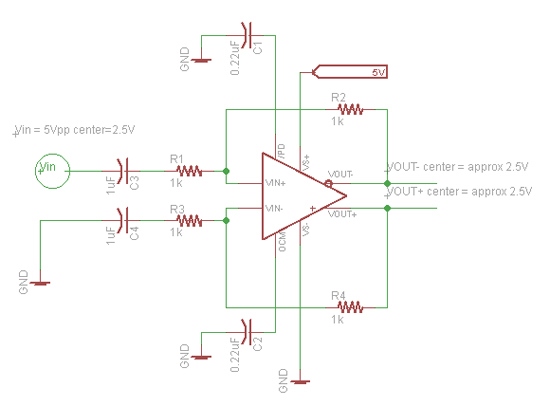Hello!
I have an application which requires conversion from a single-ended input to a differential output for a high-precision ADC. I only have access to a +5V source, so my initial design was as follows, mirroring the application note.

This yielded less than awesome results on the ADC, which took the off-center differential signal and turned it into a huge DC offset, thus getting rid of half my dynamic range. Interestingly, though, when I do this (below), the problem goes away and the signal centers more or less properly:

Now, elementary circuit analysis tells me WHY this is. Grounding the inverting input creates a voltage divider with R3 and R4, which is replicated for the inverted output by R1 and R2. This is because I blindly assumed that the top circuit is how this SHOULD work. My question is, what is the proper way to implement this? Should I:
A) AC-couple the input, so that it floats around ground instead of 2.5V when going into the THS4521?
B) Tie the business end of R3 to either a 2.5V supply or a strong voltage divider, so that my differential in is compared to that instead of ground?
C) None of these
Any help would be greatly appreciated.
Phil


